Miraculous: Rise of the Sphinx (PC, PS4, PS5, Xbox Series S,X, Nintendo Switch)
From September 2021 to November 2022, I was an in-house Narrative Designer at developer studio Magic Pockets, working to deliver what would be my first console video game: Miraculous: Rise of the Sphinx.
Position
Tasks
- Narrative Designer
- Story Editor
- “New” character profiles and rough sketches
- Screenplay for the cinematics and golden line
- Dialogues (Screenplay and Visual Novel)
- Hub quests
- Barks and Quips (writing and scripting)
- Dubbing overview (English and French)
A Unique Mission
As the recruiter was giving me the scoop that should I join the studio, I’d be working on the first Miraculous console game, I already knew everything.
When I say I knew everything, I mean I realized how big of a deal Miraculous was… I was astounded that this particular studio had been selected to execute such a mission.
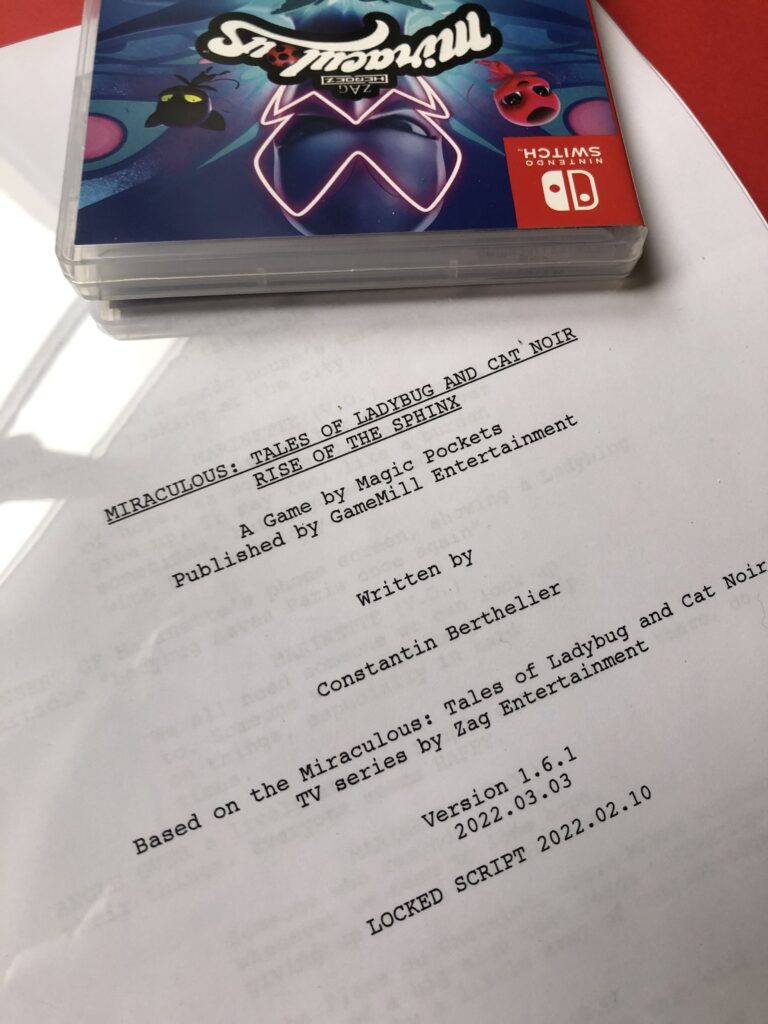
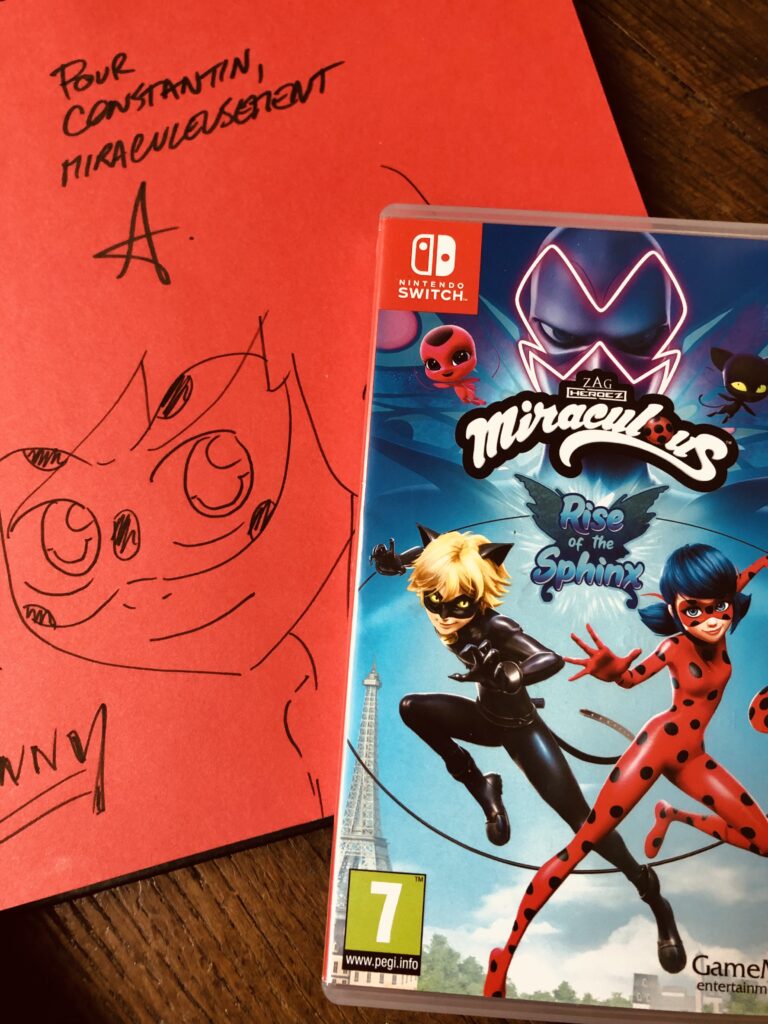

Years before I was assigned as the Narrative Designer on the game, I already had my Miraculous artbook signed by Thomas Astruc!
Indeed, I was already aware, even before meeting the team from Zag Animation, the owner of the license slated for console adaptation, that the adventures of Ladybug and Chat Noir represented a phenomenon that comes around only every 30 years.
While it’s not my place to recount the extraordinary success of this animated series, my excitement was exponentially boosted knowing that we were grappling with a fresh license in Miraculous. In an era where pop culture more and more resembles a cursed dimension where the past is compressed into a futureless impasse, Miraculous carries a “blockbuster” license aura, imbued with the refreshing appeal of something novel, a high-quality product with that new-car smell.
I guess you can predict what came next… After a few exchanges and negotiations, I officially joined Magic Pockets as a Narrative Designer.
A Full Mission
I won’t delve into the production details of the game here, as they could form a development diary on this site’s blog. But I will simply say that while the task of solely ensuring all the narrative aspects of this game, a game based on a highly scripted series, was consequential, I could always count on incredibly invaluable colleagues, with whom I’d readily collaborate again.
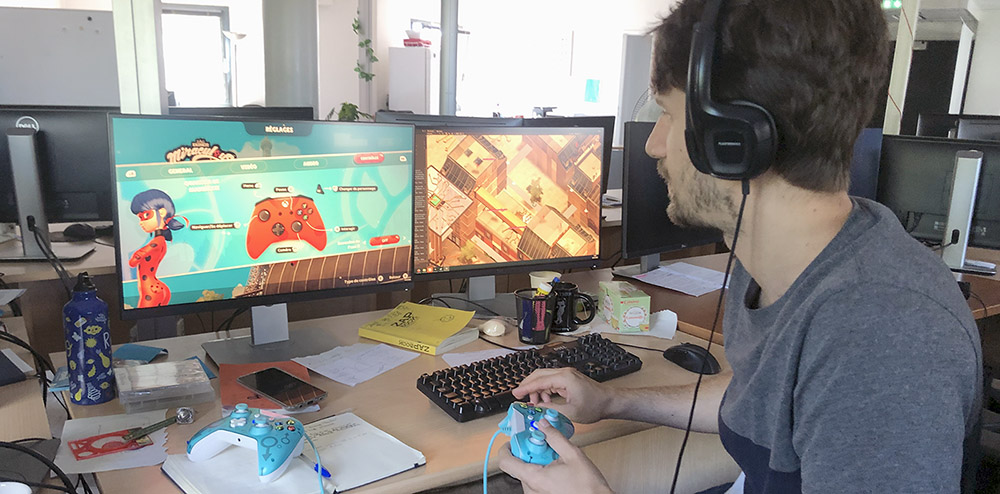
Yet, I indeed found myself alone on many tasks, particularly the screenplay. After revising and getting a prose story outline approved, I decided that the screenplay would carry all the main adventure’s narrative, and each entry would be distilled into features or assets needing production.
For the latter, a lot of content I’d hoped to see in cinematics had to be produced in visual novel format or even pared down to simple “barks” integrated into the gameplay. Fortunately, we managed to salvage the “flashback” scene, which wasn’t truly mine but came from Thomas Astruc himself. After I’d drafted the first version and he’d given his approval for this key lore moment of Miraculous to be exclusive to the game, I just reworked a few dialogues and the format.
On this note, I must broadcast my gratitude for the unexpected and appreciable benevolence from Zag Studio. They placed trust in me right off the bat to bring their treasured license to the world of video games. I was pleasantly surprised by their enthusiasm for the ideas I could propose, even those that seemed a bit outlandish to me.
Giving Shape, Giving Life
Once the screenplay was approved, it was time to work on the other narrative aspects of the game, which took up the bulk of my time on this project. This was the heavy lifting, the real graft. Writing dialogues for the non-gameplay sequences and integrating them into the Unity engine. Always keeping an eye on the storyboards for the cinematics, monitoring the visual novel’s development, establishing a quest we classified as “romantic”…
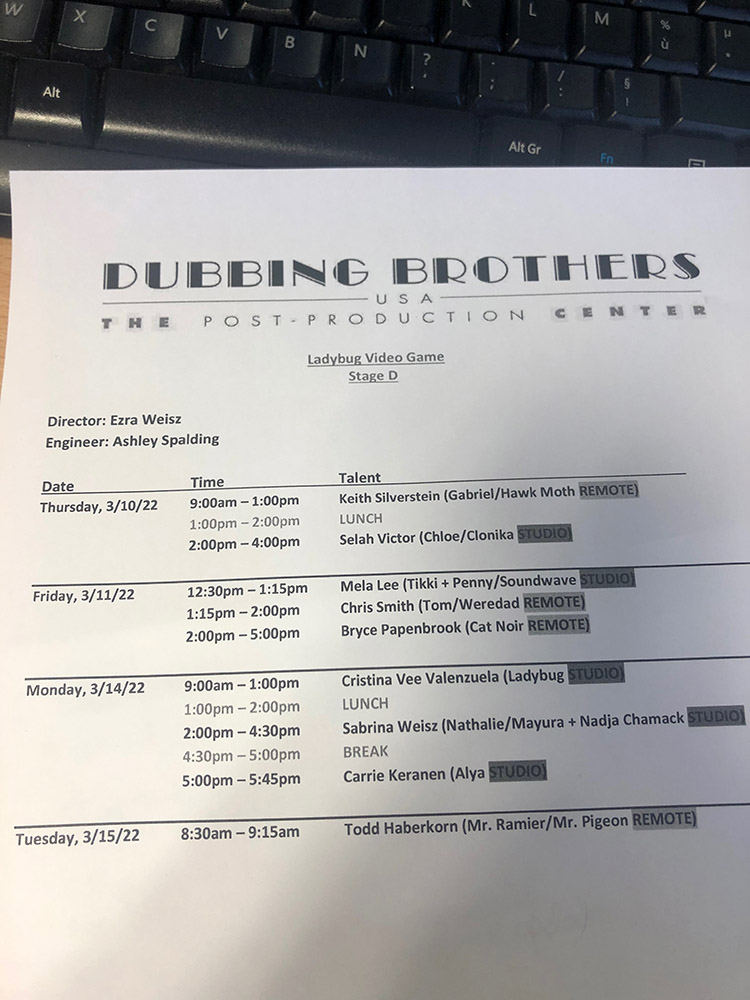
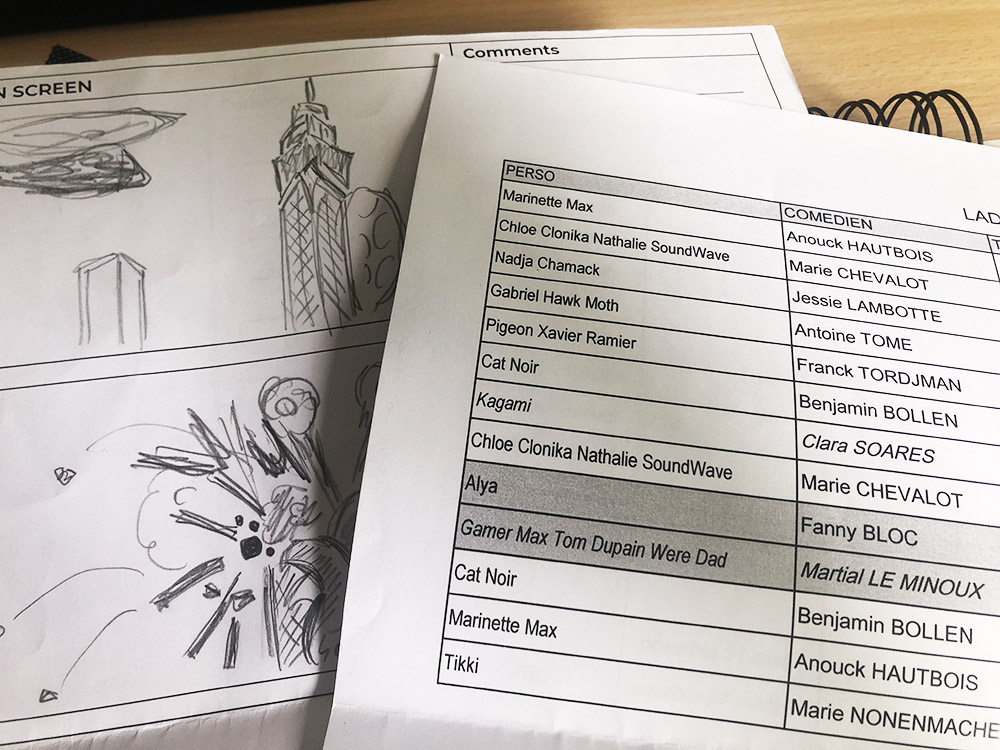
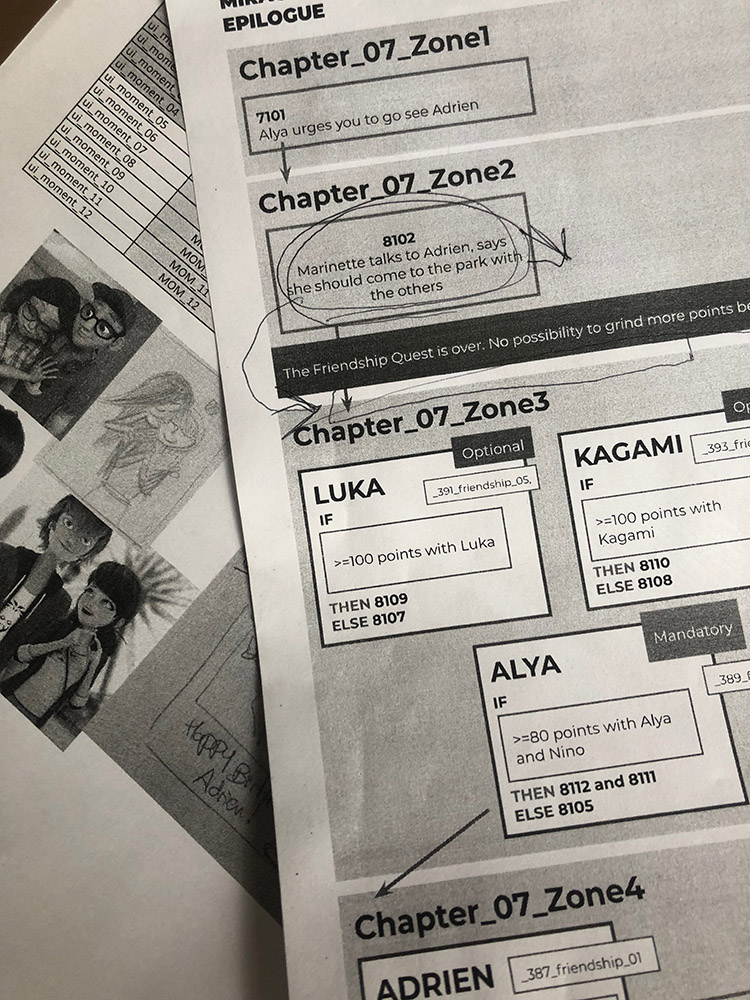
And then, like a reward, once all the content was finally approved, I had the opportunity, thanks to the support of the publisher GameMill, to participate in the voice recording of the game with the real actors from the series. I was able to meet, via video conference, the incredible Ezra Weisz, who expressed his appreciation for my script and gave me a few directions for the sessions before the recording began.
And let me tell you, it’s an incredible feeling to hear your script, which you’ve poured your heart and soul into, performed and interpreted by actors on the other side of the world, all of them incredibly talented, each in their own way. These recording sessions with talents like Christina Valenzuela, Selah Victor, Bryce Papenbrook, and Keith Silverstein… were undoubtedly the highlight for me of this production and probably of my entire career as a Narrative Designer.
A few months later, I found myself in a recording studio in Paris, in person this time, to supervise the recording of the French voices, and in the company of none other than… Thomas Astruc.
These sessions were the final reward before, a few short months later, the Switch cartridge of the game landed on my desk.
My Interview for GameMill Entertainment after the game was released:
